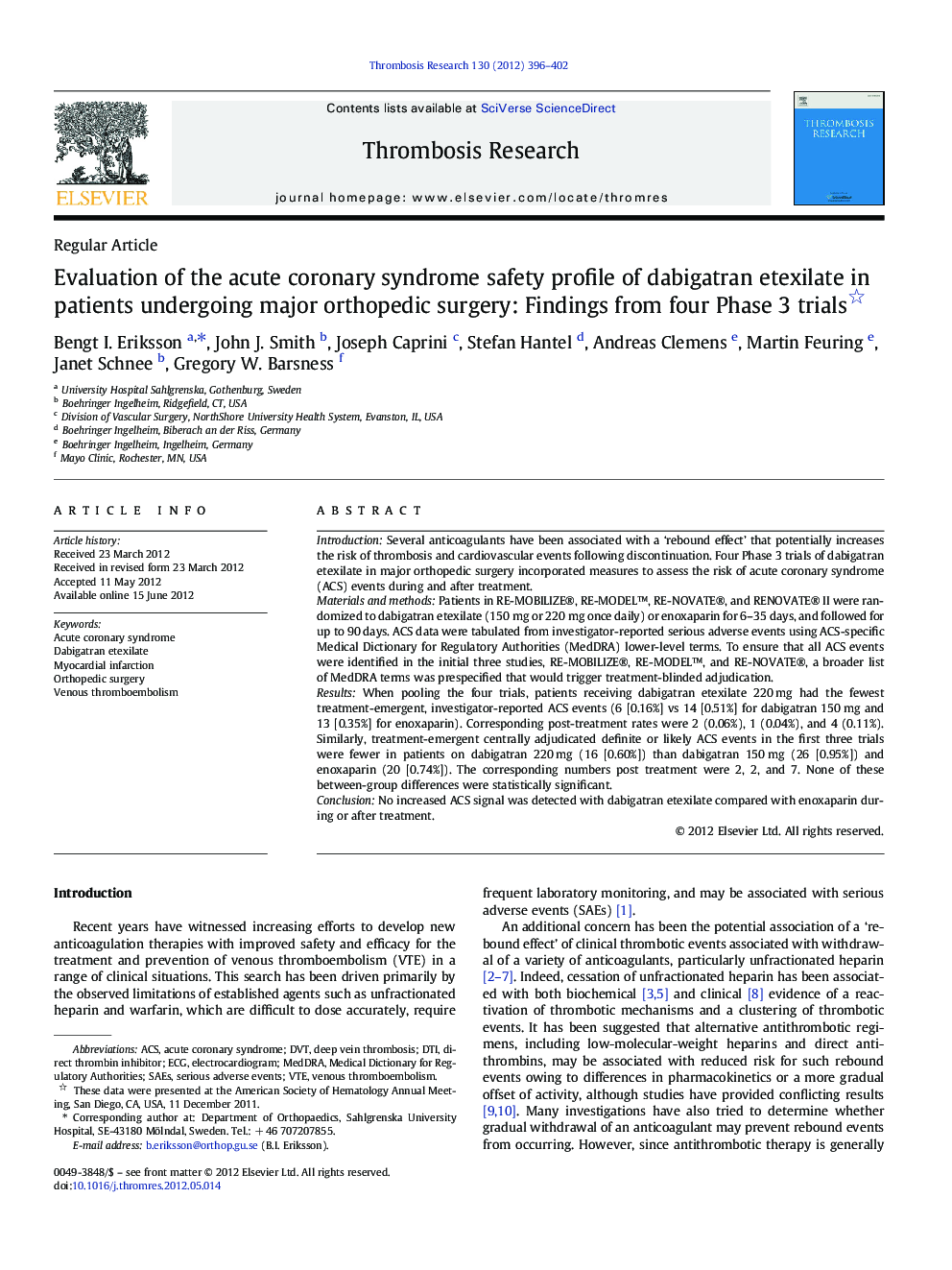| Article ID | Journal | Published Year | Pages | File Type |
|---|---|---|---|---|
| 3028267 | Thrombosis Research | 2012 | 7 Pages |
IntroductionSeveral anticoagulants have been associated with a ‘rebound effect’ that potentially increases the risk of thrombosis and cardiovascular events following discontinuation. Four Phase 3 trials of dabigatran etexilate in major orthopedic surgery incorporated measures to assess the risk of acute coronary syndrome (ACS) events during and after treatment.Materials and methodsPatients in RE-MOBILIZE®, RE-MODEL™, RE-NOVATE®, and RENOVATE® II were randomized to dabigatran etexilate (150 mg or 220 mg once daily) or enoxaparin for 6–35 days, and followed for up to 90 days. ACS data were tabulated from investigator-reported serious adverse events using ACS-specific Medical Dictionary for Regulatory Authorities (MedDRA) lower-level terms. To ensure that all ACS events were identified in the initial three studies, RE-MOBILIZE®, RE-MODEL™, and RE-NOVATE®, a broader list of MedDRA terms was prespecified that would trigger treatment-blinded adjudication.ResultsWhen pooling the four trials, patients receiving dabigatran etexilate 220 mg had the fewest treatment-emergent, investigator-reported ACS events (6 [0.16%] vs 14 [0.51%] for dabigatran 150 mg and 13 [0.35%] for enoxaparin). Corresponding post-treatment rates were 2 (0.06%), 1 (0.04%), and 4 (0.11%). Similarly, treatment-emergent centrally adjudicated definite or likely ACS events in the first three trials were fewer in patients on dabigatran 220 mg (16 [0.60%]) than dabigatran 150 mg (26 [0.95%]) and enoxaparin (20 [0.74%]). The corresponding numbers post treatment were 2, 2, and 7. None of these between-group differences were statistically significant.ConclusionNo increased ACS signal was detected with dabigatran etexilate compared with enoxaparin during or after treatment.
